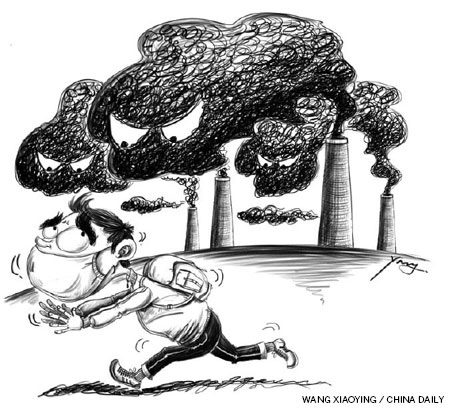
 |
The recent high environmental pollution levels in Beijing and other Chinese cities should be seen as a great threat to children's health and quality of life. A large number of children die every year from environment-related diseases.
The good news is that we can prevent such deaths by using low-cost and sustainable tools and strategies to improve the environment.
A World Health Organization study shows that 13 million deaths across the world can be prevented just by improving the environment. In some countries, environmental change can rid governments of more than one-third of their burden, which is created by the spread of diseases.
The WHO study should help countries to choose appropriate intervention methods. According to the study, carried out in 23 countries, more than 10 percent of the deaths are caused by unsafe water (including poor sanitation and hygiene) and indoor air pollution, particularly from solid fuel used for cooking.
In the main Chinese cities, air pollution - caused by burning of highly polluting coal and noxious auto emissions - has become a major problem. One can imagine the extent of pollution in Beijing, where one in every four people owns a car. In fact, the Chinese capital has more than 5 million cars.
Children make up almost half the population of developing countries. And most of the deaths among children below 5 years of age can be attributed to intestinal and respiratory infections. This makes it important to not only address environmental factors, but also to use low-cost interventions such as immunization, better delivery and newborn care practices, and treatment of common infections to save children's lives.
It's not that environmental factors such as pollution, occupational diseases, radiation, and climate and ecosystem changes do not affect people in industrialized countries. The integrity of the global environment is being increasingly compromised by the deteriorating ozone layer and an ever-higher concentration of gases responsible for the greenhouse effect. The more severe these factors become the worse will be their impact on human health.
Environmental factors affect children's health from the time of conception and intra-uterine development through infancy and adolescence. Children are more vulnerable than adults to environmental factors because, among other reasons, their immune systems and detoxification mechanisms are not fully developed.

















 Buildings collapse after subsidence in S China
Buildings collapse after subsidence in S China


![]()
